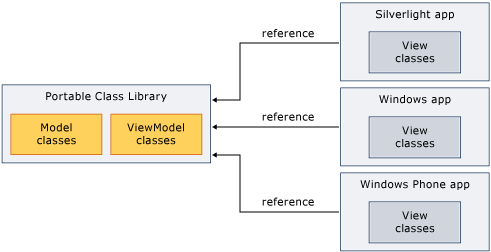I'm working on a WPF application, and I'm structuring it using the MVVM pattern. Initially I had an idea that the ViewModels should be reusable, but now I'm not too sure anymore.
- Should I be able to reuse my ViewModels if I need similar functionality for a WinForms application?
- Silverlight doesn't support all things WPF does - should I be able to reuse for Silverlight applications?
- What if I want to make a Linux GUI for my application. Then I need the ViewModel to build in Mono - is this something I should strive for?
- And so on..
So; should one write ViewModel classes with one specific View in mind, or think of reusability?

